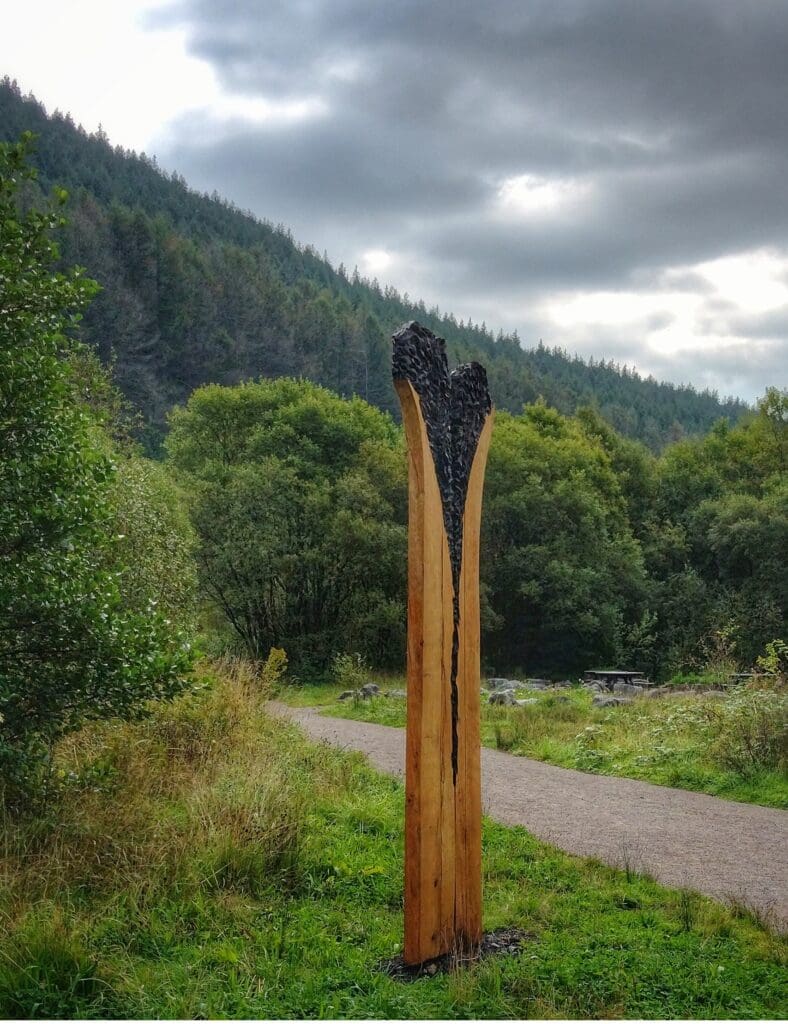Bridgend County Borough Council plays its part in promoting and protecting the biodiversity which has replaced the scarred landscape of the mining valleys, as well as the wildlife found at other green spaces throughout its communities.
Nature has reclaimed the land that was once decimated by coal mining sites across the county borough. Parc Calon Lan in the Garw Valley, and Ogmore Washeries in the Ogmore Valley, have colliery spoil sites which have been transformed into green spaces over several decades of natural colonisation and are now managed by the council as wildflower meadows.
These sites, abundant in unique habitats for wildlife, are home to diverse communities of species including the rare Brown-banded carder bee, spotted at the Ogmore Washeries. Alongside the preservation offered by the council, the Colliery Spoil Project is an initiative to raise awareness of the value of the biodiversity found at colliery spoil sites and aims to protect such areas from housing or industrial development, removal, solar farms and other similar threats.
Liam Olds, an entomologist leading the Colliery Spoil Project, said: “Once the epicentre of heavy industry in the South Wales Valleys, today our former colliery sites harbour some of the country’s rarest and most threatened species.
“From the well-known adder and much-loved bee orchid to the largely unknown Tormentil mining bee and Grayling butterfly, these unlikely sanctuaries support a diverse mix of habitats, rich in biodiversity. Though often overlooked and misunderstood by many, they stand as testament to the resilience of nature within the heart of the coal mining communities that shaped them.
“It is important that these sites are protected to conserve not only their rich biodiversity, but also our industrial and cultural heritage.”


In addition to supporting the biodiversity found at some colliery spoil sites, the council oversees an array of green spaces throughout the county borough. Nature reserves, including Frog Pond Wood, Craig-y-Parcau and other green areas are managed to increase bumblebee and butterfly populations, with the hope that the rarer varieties will continue to establish new homes.
Kenfig National Nature Reserve is one of just six remaining places in the UK to have a Shrill carder bee population – one of the rarest and most threatened bumblebees in the country. The area is also home to the scarce Brown-banded carder bee and the council has been working with a range of coastal golf clubs and farmers, as well as Merthyr Mawr Nature Reserve, to increase the habitat for this bumblebee across the coastline.
Janine Nightingale, Corporate Director for Communities at Bridgend County Borough Council, said:
How wonderful it is that with the removal of mining and heavy industry, nature has transformed the landscape. There is an irony that the former coal mining sites in the county borough, now offer rich and unique habitats for the wildlife they would have once destroyed.
The council is actively protecting and promoting the biodiversity that has been gifted to our area, especially being one of the few areas in the UK to home the Shrill carder bee. We fully embrace our responsibility to continue to preserve the habitats and wildlife of considerable local, regional and national significance.
Throughout the county borough these high-quality green spaces offer a host of wellbeing benefits to residents, and we have ensured that these areas can be accessed on foot or by bike – I urge everyone to take advantage of them, you won’t regret it!









Leave a Reply
View Comments